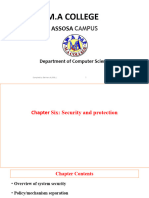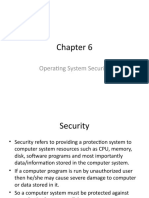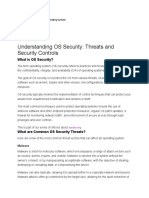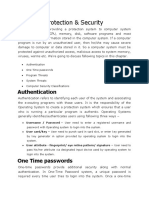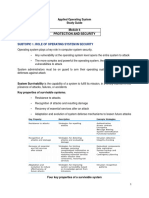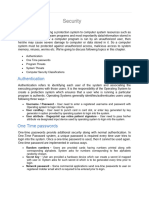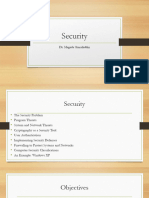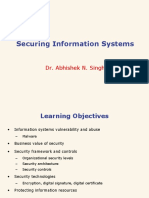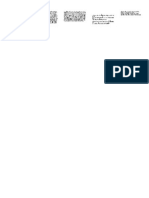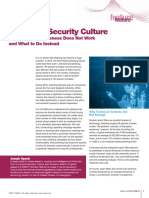0% found this document useful (0 votes)
47 views11 pagesOperating System Security
The document discusses operating system security, including what it is, types of threats like malware and network intrusion, and how to ensure security through authentication, one-time passwords, firewalls, and physical security. It also covers security goals like integrity and secrecy and security breaches like integrity breaches and denial of service.
Uploaded by
Obed KhanCopyright
© © All Rights Reserved
We take content rights seriously. If you suspect this is your content, claim it here.
Available Formats
Download as DOCX, PDF, TXT or read online on Scribd
0% found this document useful (0 votes)
47 views11 pagesOperating System Security
The document discusses operating system security, including what it is, types of threats like malware and network intrusion, and how to ensure security through authentication, one-time passwords, firewalls, and physical security. It also covers security goals like integrity and secrecy and security breaches like integrity breaches and denial of service.
Uploaded by
Obed KhanCopyright
© © All Rights Reserved
We take content rights seriously. If you suspect this is your content, claim it here.
Available Formats
Download as DOCX, PDF, TXT or read online on Scribd
/ 11














